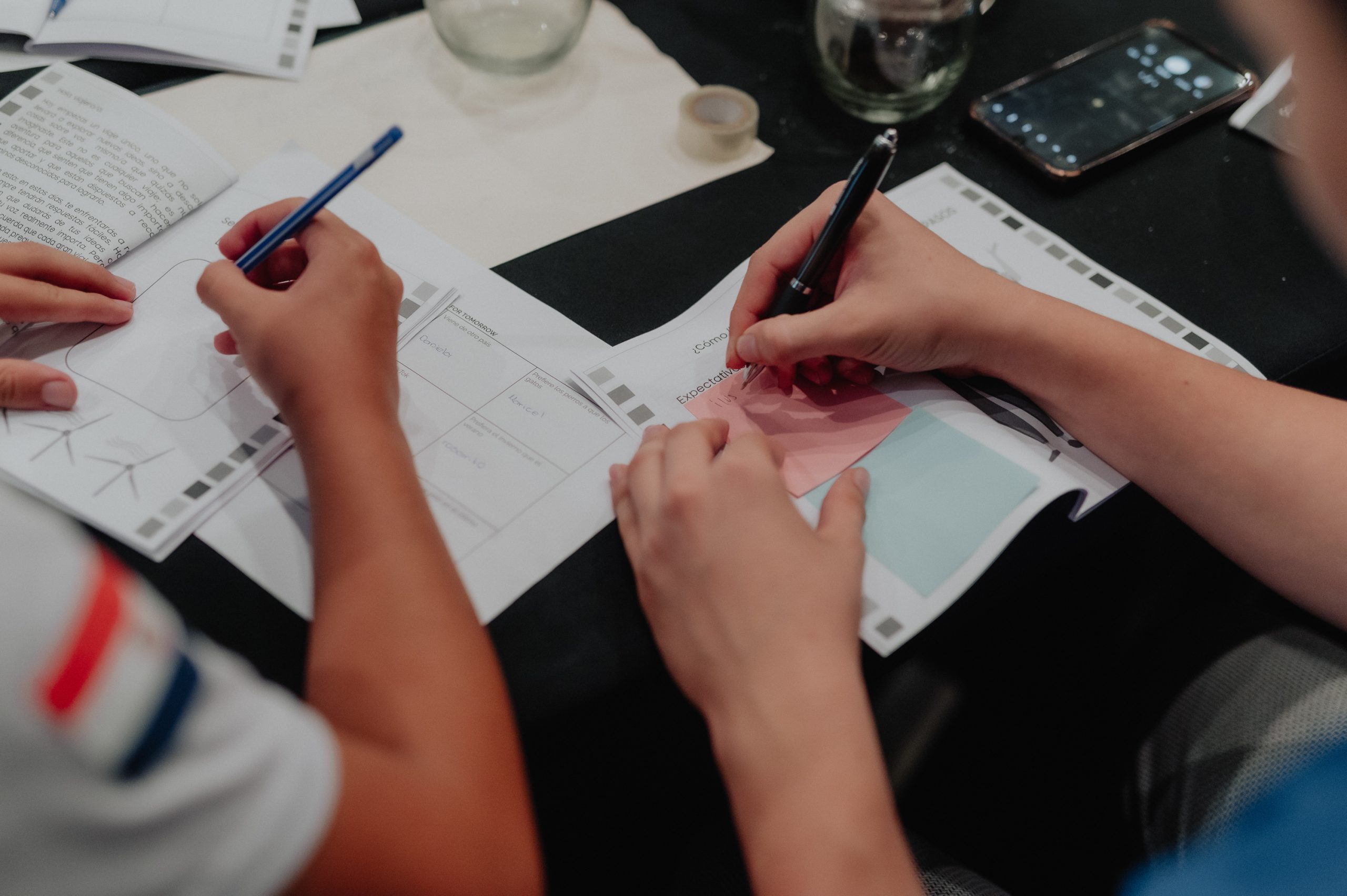Design Thinking is a widely used practice in the industry, especially in the technology innovation sector and by companies seeking to address various client needs. Inspired by how designers think, it emphasizes experimenting with new perspectives and testing products or services based on user experience. In education, this methodology helps facilitators and students learn and lead actions in innovative ways. It aligns with the STEM education process and serves as a valuable tool for real problem solving.
In an exclusive interview to the Samsung Solve for Tomorrow Latam platform, Andrea Ferreira, coordinator of innovation contests at KOGA, shares tips on how to leverage Design Thinking in Project-Based Learning.
“The Design Thinking methodology has the advantage of being applicable to different types of projects, allowing us to use it regardless of the topic or goal we aim to achieve,” she explains. KOGA is a technical partner of the program in Paraguay, Argentina, and Uruguay.
Ferreira acknowledges that teaching students to integrate this methodology into their learning and project development processes is a challenge, “despite being a useful tool, from school projects to creating corporate products or services,” adds. In the Solve for Tomorrow program, Design Thinking is part of every stage of the project journey, stimulating young people to think about problems with a design perspective, taking into account a creative approach to develop a prototype that, at the same time, can make sense to the end user, that is practical and feasible. The first step is empathy, where we learn about people’s values and needs. Next is definition, to better understand the challenges, and ideation, focused on developing creative solutions. In prototyping, ideas become tangible, and finally, testing is the stage of bringing ideas to the world. Learn more about Design Thinking here.
Science teacher Yuly Rivera, mediator of the “Trapiche que da luz” project, added this methodology to her usual school dynamics, providing didactic and experiential resources to support the students. The team was the 2022 winner of Solve for Tomorrow in Peru and managed to generate electricity from sugar cane mills. “The ideation and prototyping processes were fundamental for them to see their idea come to fruition,” she celebrates.
What are the benefits of Design Thinking in educational projects?
According to Andrea Ferreira, the methodology is iterative, meaning it allows you to move forward and also go back to improve the final product/service you aim to deliver. “Make and test as many times as necessary until we are satisfied with the result,” she emphasizes. Additionally, it helps to focus on what really matters: the persona or the client. “It’s crucial to understand the interests and needs of the audience we want to help,” she highlights.
Therefore, it is important to delve into the problem, as it is impossible to solve something without understanding how or why it occurs. “A advice: take your time during the problem exploration stage; it’s a critical process to reach a good solution,” the specialist says. “To empathize with students, it is key to discuss current issues, open the conversation, and ask: ‘What bothers or frustrates you in society?’,” she adds.
As an initial strategy for his project, Argentine educator Agustín Pascua introduced the program’s project journey to his class of 20 students, inviting them to organize into groups based on their skills and abilities. Then, he spent two classes working on the Sustainable Development Goals (SDGs), helping them list potential social challenges they would like to address. From brainstorming sessions, various issues emerged that impacted the school and the community. “Among them, we identified that the grass around the school, which is vast and beautiful, was littered with cigarette butts scattered everywhere,” says the teacher, who mediated the “Collisafe” project, winner of the Solve for Tomorrow Argentina, Paraguay, and Uruguay in 2022.
Want to know more about the methodology?
In the Suggested Materials section of the Solve for Tomorrow Latam platform, there is content dedicated to explaining more about Design Thinking. Take a look here on a free toolkit on the topic.



